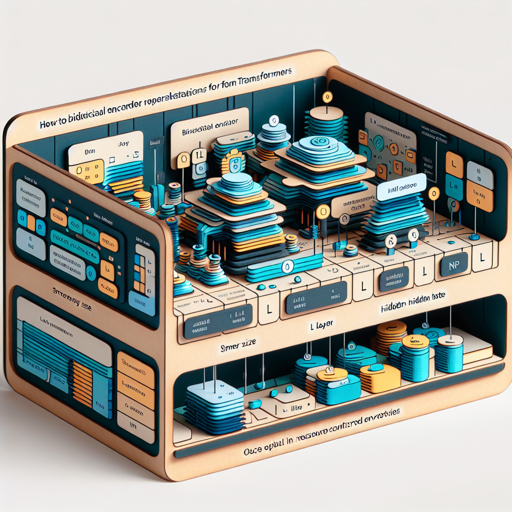Natural Language Processing (NLP) has been revolutionized with the introduction of the BERT (Bidirectional Encoder Representations from Transformers) architecture. BERT Miniatures offer a compact version of these models, enabling efficiency without sacrificing performance. This article will guide you through understanding, downloading, and fine-tuning these 24 BERT models designed for environments with limited computational resources.
What are BERT Miniatures?
BERT Miniatures are smaller versions of the original BERT models, consisting of various configurations indicated by L (layers) and H (hidden state size). They are most effective when the fine-tuning labels are produced by a larger, more accurate model (referred to as a teacher model).
Why Use BERT Miniatures?
- Designed for resource-constrained environments.
- Can be fine-tuned like full-sized models.
- Encourages innovation and experimentation without the need for high computational power.
Downloading BERT Miniatures
You can download the 24 BERT miniatures either from the official BERT Github page or via HuggingFace with the links provided below:
| H=128 | H=256 | H=512 | H=768 | |
|---|---|---|---|---|
| L=2 | 2/128 (BERT-Tiny) | 2/256 | 2/512 | 2/768 |
| L=4 | 4/128 | 4/256 (BERT-Mini) | 4/512 (BERT-Small) | 4/768 |
Fine-Tuning BERT Miniatures
To obtain optimal results, you can fine-tune the models using selected hyperparameters. Imagine tuning a musical instrument; if you set it just right, the sound will be melodious and soothing. The same goes for fine-tuning models, where the choice of hyperparameters can make a significant difference in performance!
- Batch Sizes: 8, 16, 32, 64, 128
- Learning Rates: 3e-4, 1e-4, 5e-5, 3e-5
Performance Metrics
Here’s a quick overview of the performance of various BERT models across different tasks on the GLUE benchmark:
| Model | Score | CoLA | SST-2 |
|---|---|---|---|
| BERT-Tiny | 64.2 | 0.0 | 83.2 |
| BERT-Mini | 65.8 | 0.0 | 85.9 |
| BERT-Small | 71.2 | 27.8 | 89.7 |
| BERT-Medium | 73.5 | 38.0 | 89.6 |
Troubleshooting & Tips
If you encounter issues while downloading or fine-tuning BERT Miniatures, here are a few troubleshooting ideas:
- Ensure that you have a stable internet connection for downloading models.
- Check the compatibility of the libraries you are using. Updating to the latest versions of libraries like TensorFlow and PyTorch can resolve numerous issues.
- If a model is not performing well, experiment with different hyperparameter settings. Just like baking a cake requires precise measurements, tuning your model requires careful adjustments.
- For any persistent issues, explore community forums or reach out for support on platforms dedicated to AI development.
- For more insights, updates, or to collaborate on AI development projects, stay connected with fxis.ai.
Conclusion
At fxis.ai, we believe that such advancements are crucial for the future of AI, as they enable more comprehensive and effective solutions. Our team is continually exploring new methodologies to push the envelope in artificial intelligence, ensuring that our clients benefit from the latest technological innovations.

